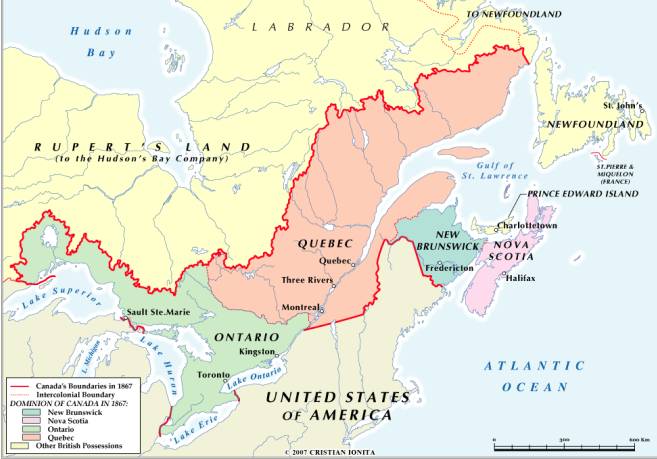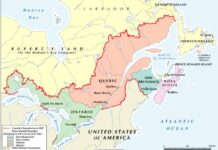It is not too much to say that George Brown and John A. Macdonald detested each other. This went far beyond the usual political disagreements over policy and position: it was deeply personal for both men. George Brown had come to personify the Radical Reformers of Upper Canada through the 1850’s: anti-French, anti-Catholic, a man who wrote strident editorials in the newspaper he had founded, the Toronto Globe, about the need to save Upper Canada from French domination and restore its rights and freedoms.
The so-called United Province of Canada was, in reality, still divided at the Ottawa River. There was always a joint-Premier heading the governments that came and went with increasing frequency as political deadlock and economic development stalemates took hold. From Brown’s point of view, and those of the Reform Party, gradually coming to be known as the Liberals, the fact that Upper Canada, with its larger population, had the same number of seats in the Assembly was outrageous and anti-democratic. He had been quite content with that situation as long as Lower Canada had the larger population, but that had changed and the grievance was deeply felt. Representation by Population was his war cry in issue after issue of the paper he had built into the most influential in Upper Canada.
John A. Macdonald, a lawyer from Kingston, had slowly moved up through the ranks of the conservative element in Canadian politics, taking over effective leadership of the oddly-named Liberal-Conservative Party in 1854. He and Brown had always been at loggerheads, and there were times when the comments and barbs traded in the Assembly had become personally wounding and deeply offensive. No love lost was an understatement.
This may have seemed strange, given that both men were immigrants from Scotland, Macdonald just three years older than Brown. But their paths had gone in different directions: Macdonald had lost his wife, after a very serious illness, in 1857. Their older son had died at just 13 months, and John A. was left to raise another son alone. Brown had never married: his love was his paper and Upper Canada, and politics was what brought those two loves together. He came from a radical Scottish background, with a long record of activism before he arrived in New York in 1837. He moved to Toronto in 1843 and dove into journalism and politics at once.
Peter Waite, Canadian historian, has well described Brown as the 1860’s began: “Brown’s trouble was that he had been a newspaper editor too long – he was perpetually up in arms about something”.
That level of stress and activity led to a complete physical collapse in 1860 and Brown was away from the Assembly until the election of 1863. But the man who returned to the scene of so many battles seemed quite different from the firebrand of the past. A major change had taken place in his life during the years of convalescence. In 1862, he had returned to Scotland on a visit and, within four months had met, and married, Anne Nelson. At first, it seemed that he would turn his back on politics and focus on his newspaper and his new family. But it seems he wanted to achieve one great thing before he retired from the on-going war with Macdonald and the Liberal-Conservatives.
Things had become so ugly between the two men that they had stopped even speaking to each other at all. He went back to an Assembly in which Macdonald was joint-Premier, trying to hold yet another fragile government together with a majority of just two seats to work with. It should be remembered that, at this stage in his political career, Macdonald was not the skilful, even devious, manipulator of men and events that would emerge after Confederation. He had enjoyed little success as a leader of his party so far, and this attempt at government was doomed to last less than a few months. When Brown moved a Resolution to set up a committee to examine the possibility of new constitutional arrangements in British America, perhaps even a federation of all the British American colonies, he at first left Macdonald off the list of leading politicians who he wanted to sit on his committee. He relented on that, and his committee presented their report on June 14, 1864, finding that “a strong feeling”existed in favour of a federal system to end the deadlock and frustration of the United Canadas. Ironically, that same day, Macdonald’s government fell and it seemed that the cycle of fruitless elections was about to continue, with no party in a position to form a stable and lasting administration.
It was then that George Brown, in the words of historian Donald Creighton, “performed the greatest act in his political career”. In the next four months, George Brown and John A. Macdonald were about to become partners in forging a new nation, to be called the Dominion of Canada.









